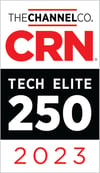The RSA Conference is an opportunity for network security professionals to meet with industry experts face-to-face and take part in continuing education through participating in seminars and attending presentations by thought leaders.
Some of the topics discussed at RSAC 2024 were top security challenges, AI expectations and security processes, and cyber resiliency roadmaps. Today’s companies have many concerns and challenges related to data breaches in the era of Gen AI.
Organizations may be targeted by advanced persistent threats (APTs) from foreign terrorists and domestic hacktivist groups. Companies often don’t detect a breach until long after it has occurred. Many businesses lack the logging and reporting capabilities needed to respond to and mitigate an attack effectively. RSAC pinpoints cyber resilience, the ability to bounce back from a data breach, as a crucial goal for today’s companies.
To defend against APTs and promote cyber resilience, companies need to transform the way they approach threat detection and response by adopting software-defined security (SDSec).
What is Software-Defined Security?
Software-defined security (SDSec) leverages software to manage and automate security functions by decoupling them from hardware constraints. By using virtualization, automation, and orchestration, SDSec provides a flexible, scalable, and dynamic security framework.
The adaptability SDSec provides is crucial in a world where cyber threats constantly evolve, and attack surfaces expand with the proliferation of cloud services, IoT devices, and mobile technologies.
4 Key Benefits of Software-Defined Security
1) Agility and Scalability
SDSec allows organizations to deploy and scale security measures rapidly as needed. Traditional hardware-based security can be slow to adapt to new threats, whereas SDSec can update and reconfigure in real time, ensuring continuous protection.
2) Centralized Management
With SDSec, security policies can be managed and enforced centrally across diverse environments, including on-premises, cloud, and hybrid setups. This unified approach simplifies the complexity of managing security in a multi-cloud world.
3) Enhanced Threat Detection
SDSec leverages advanced analytics, machine learning (ML), and artificial intelligence (AI) to detect anomalies and potential threats more effectively. By analyzing vast amounts of data, SDSec can identify patterns and respond to threats that might go unnoticed by traditional security systems.
At RSAC, experts noted that ML and AI are being discussed by C-Suite leaders as part of their security practice. While companies are concerned about AI-generated phishing attacks and malware, they recognize the potential AI has for vulnerability scanning and threat detection.
4) Automated Response
One of the most significant advantages of SDSec is its ability to automate responses to detected threats. Automated workflows can isolate affected systems, apply patches, and initiate recovery processes without human intervention, reducing response times, lessening the amount of damage caused, and mitigating the attack.
Industry Use Cases for SDSec
Heavily regulated industries, such as finance and healthcare, benefit from how SDSec delivers centralized management, automation, and analytics. Using SDSec, companies in key industries can promote cyber resiliency and align with CISA and NIST frameworks.
Financial Services
Banks and financial institutions use SDSec to protect against fraud and cyberattacks by continuously monitoring transactions and user behavior, enabling them to automatically flag and respond to suspicious activities.
Healthcare
Hospitals and healthcare providers implement SDSec to secure sensitive patient data across various platforms, ensuring compliance with regulations, such as HIPAA, while protecting against ransomware and data breaches.
Retail
Retailers use SDSec to safeguard e-commerce platforms and in-store systems, defending against data theft and ensuring the integrity of transactions. At RSAC, it was noted that supply chains, such as those the retail industry relies on, may be targeted by AI-generated phishing attacks. SDSec can help retailers defend against attacks on endpoints in the field and in warehouses.
Future of Software-Defined Security
As cyber threats become more sophisticated to include APTs and AI-generated phishing attacks, the importance of SDSec will only grow. The integration of AI and ML will enhance its predictive capabilities, enabling companies to implement preventative security measures.
As organizations continue to embrace digital transformation, the need for a dynamic, adaptable security framework will make SDSec an indispensable component of any robust cybersecurity strategy. SDSec is becoming a cornerstone of modern cybersecurity because of its ability to transform how organizations detect and respond to threats. The agility, scalability, and advanced capabilities of SDSec provide a robust defense against the ever-evolving cyber threat landscape.
ProActive Solutions offers software-defined security as part of our Data Center Transformation solutions. We take a consultative approach to transforming your company’s cybersecurity strategy. ProActive can design an SDSec solution that meets your organization's security challenges and follows CISA best practices and the NIST Cybersecurity Framework.
Find out what SDSec can do to modernize your company’s approach to security. Request a consultation from ProActive.




